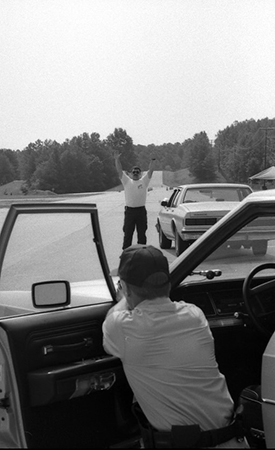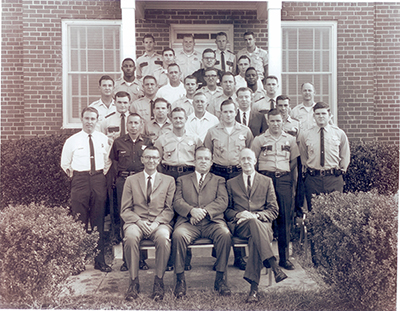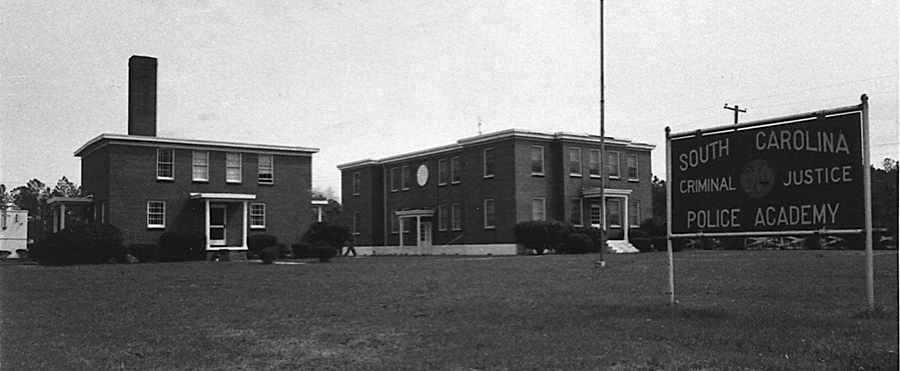
1968:The South Carolina Police Academy was created with a $30,000 LEAP (Law Enforcement Assistance Program) Grant given to SLED. Having to first be employed by a law enforcement agency, the first class graduated in September.
1972: Classes began at the South Carolina Criminal Justice Academy in its present site.
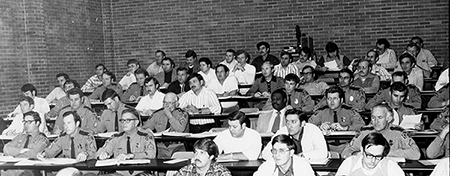
1974: The driving range was added to the SCCJA site and legislation facilitated the creation of the Criminal Justice Academy's Hall of Fame.
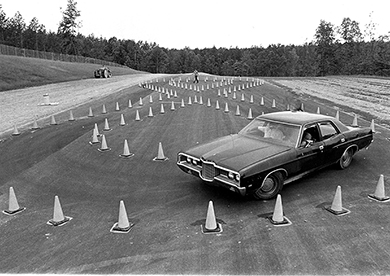
1976-78: A cabin bank was donated and placed on the new range, alongside additional improvements including a garage, classrooms, and several buildings, donated by Fort Jackson, utilized as a practical problems village.
1979: A three story dorm wing and 2 story office building built on the SCCJA site.
1980: The Academy opened the doors of the Hall of Fame, serves as law enforcement museum, later renovated in 1999 and renamed The Law Enforcement Officers' Hall of Fame.
Early 80's: Firearms range was completed, including shotgun range, rifle deck, and maintenance support building
1985: The first Law Enforcement Task Analysis was developed and implemented.
1988-89: Revisions to the Training Act enacted a mandatory continued training provision whereby officers' certification cards expire every 3 years and specific number of in-service training hours are required during the certification cycle. Microwave tower, pre-engineered building, equipment building, and Automobile Accident Reconstruction building were built, and the dining area was increased by 4,000 sq. feet.
1991: The Department of Youth Services donated additional land to the Academy for use of an additional parking lot.
The CJA Studio broadcasted its first course, via closed-circuit satellite.


1992: The Academy was accredited by the Southern Association of Colleges and Schools Commission on Occupational Education Institute, and soon by CALEA (Commission on Accreditation for Law Enforcement Academies) in 1998.
1993-94: The Academy became a division of the new Department of Public Safety after Government Re-structuring.
1996: DMT certification and recertification was assumed by the Academy from SLED. A skid pad and the Firearms Training Systems (FATS) were added to the range complex.
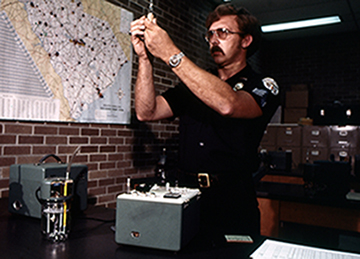 1999-2000: The Academy's web page was developed and made available online. Entrance standards were developed for pre-employment assessment and a computer lab was equipped to assess web-based training, online training, and self-paced training.
1999-2000: The Academy's web page was developed and made available online. Entrance standards were developed for pre-employment assessment and a computer lab was equipped to assess web-based training, online training, and self-paced training.
2000-01: Two interactive distance learning classrooms and computer labs were established to initiate the beginning of optional distance learning training delivery. Installation of security system was initiated and activated in 2002.
2003: A new Basic Law Enforcement Student Manual was developed and the Physical Abilities Test (PAT) procedure was approved and implemented.
2004: Distance Learning Satellite Site Assessments were conducted at 5 locations: Piedmont Technical College, Mt. Pleasant PD, Newberry County PD, Jasper County Sheriff's Office and Charleston County Sheriff's Office Detention Center.
2006: Regional training sites continued to be researched and implemented to accommodate and expand advanced and specialized training opportunities. Legislation was introduced and passed to separate the Academy from the Department of Public Safety.
2007: The Law Enforcement Training Council was appointed.
2009: Plans to construct a "Village Complex" with facilities to exclusively support and facilitate all Basic Law Enforcement classes were completed, staffing initiated and implementation begun as a result of the approved funding.
CJA transitioned from satellite broadcasting to an online training program, Moodle, due to increasing cost of satellite time. Moodle, is a very basic, open-source learning management system.
2010: Ground was broken in February and construction began on the new "Village Complex". The Basic Law Enforcement Training Program was expanded and upgraded to 12 weeks from 9.
2013: The Academy introduced a new learning management system module, ACADIS, to the Academy staff.
2014-2015: A test pilot of ACADIS was opened to several agencies including, South Carolina Highway Patrol, Lexington County Sherriff's Office, Columbia Police Department and Irmo Police Department. After successful completion of the pilot testing phase, the transition began from Moodle to ACADIS for all agencies in the state. ACADIS allows training officers/agencies control of what and when their officers do training, training records are automatically updated upon course completion and the use of Academy ID credentials allows for elevated security.

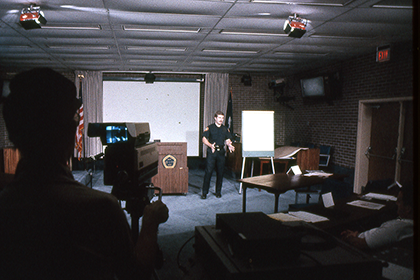
In the first full year of its existence 27,750 courses were completed in the ACADIS LMS. The second year the LMS saw a significant jump in completed courses (FY15-16) to 75,960. At any given time, there are over 30 online courses available for viewing. The ACADIS LMS is open to use by all Class I, II and III law enforcement officers.
2016: Academy representatives attended the CALEA conference in Charleston, SC and the Academy was awarded its initial Public Safety Training Academy Accreditation on November 5. Each year the Academy will be assessed on its anniversary date to ensure consistent compliance with CALEA standards.
